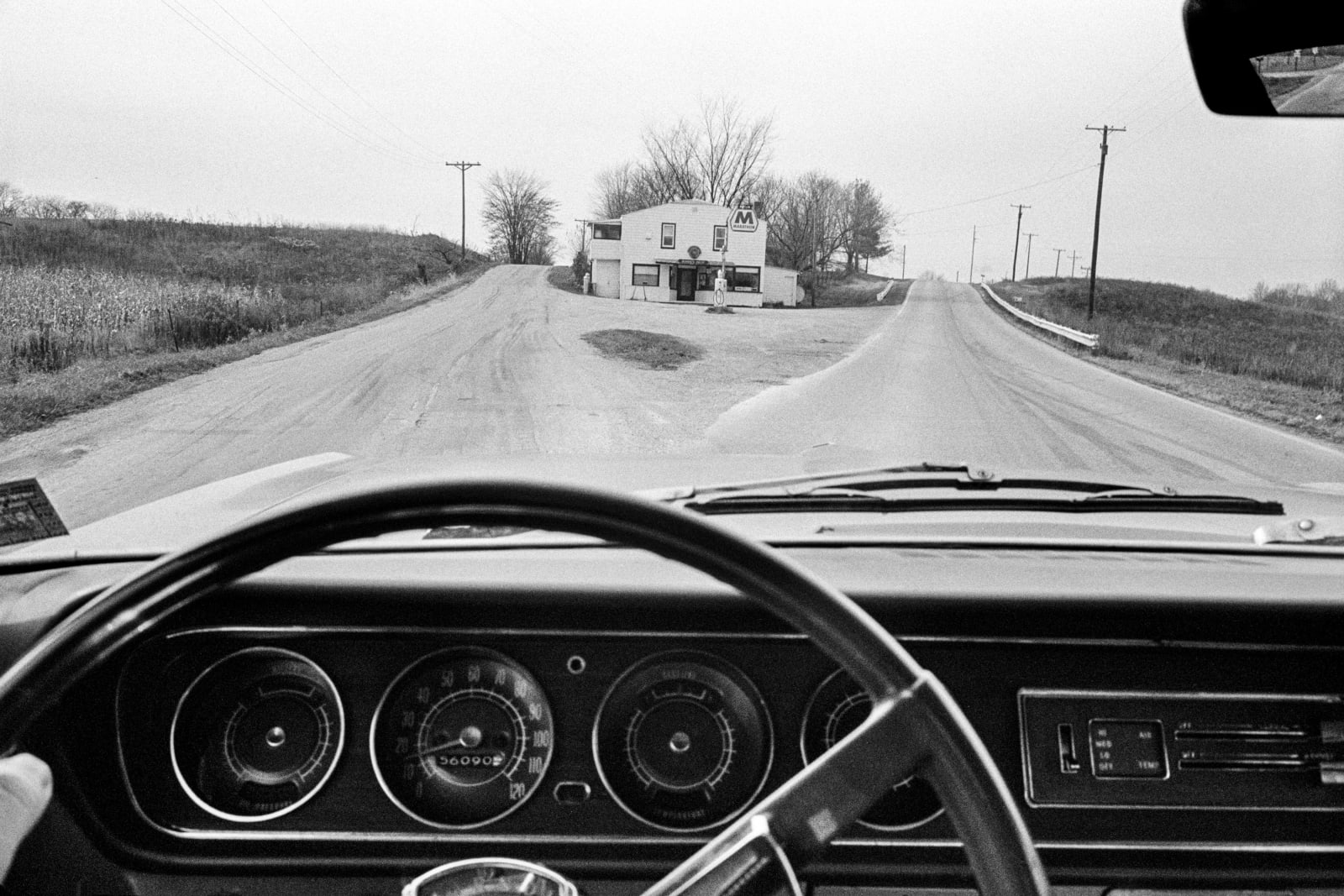
Clark Winter American, b. 27/10/1951
.
Paper: 40.6 x 50.8 cm / 16 x 20 in
.
The View from Behind the Wheel: Cars, Cameras, and Decision Time
In Clark Winter's stark black and white photograph "Decision Time, Ohio, 1971," we confront a literal crossroads. Shot from inside a stationary vehicle, the image captures a rural intersection where two roads diverge around a small white building marked with what appears to be a Mobil gas station sign. The car's steering wheel and dashboard instruments occupy the foreground—the speedometer frozen at zero—while utility poles march into the distance along both possible routes.
This photograph exemplifies the intimate relationship between automobiles and photography that developed throughout the 20th century. Both technologies transformed how Americans experienced space and time: cars collapsed vast distances while cameras preserved fleeting moments. Together, they redefined our relationship with landscape and movement.
The perspective from behind the wheel creates a particular visual grammar. The windshield becomes a ready-made viewfinder, transforming the roadside world into a series of framed scenes. The dashboard creates a natural proscenium, establishing depth and scale. The steering wheel—partially visible at the bottom edge—reminds us of human agency within this mechanical viewpoint.
Winter's composition belongs to a rich tradition of "car-camera" imagery. Robert Frank's influential "The Americans" frequently employed this vantage point to capture unposed glimpses of roadside America. Lee Friedlander later used car windows and mirrors to create complex visual puzzles where reflections and realities converge. Both photographers recognized how the automobile simultaneously isolates the observer while providing unprecedented access to everyday scenes.
What makes "Decision Time" particularly compelling is its arrested motion. Unlike drive-by photography that blurs landscapes into impressionistic streaks, Winter's vehicle has stopped. The diverging roads offer a visual metaphor for choice itself—left or right, this path or that one. The photograph transforms a mundane rural junction into something more philosophical: a meditation on decision-making, American mobility, and the moments between movements.
In freezing this moment of potential energy—a car paused before choosing its direction—Winter reminds us that every journey consists not just of motion but also of these crucial points of deliberation, when multiple futures briefly coexist before a single path is chosen.